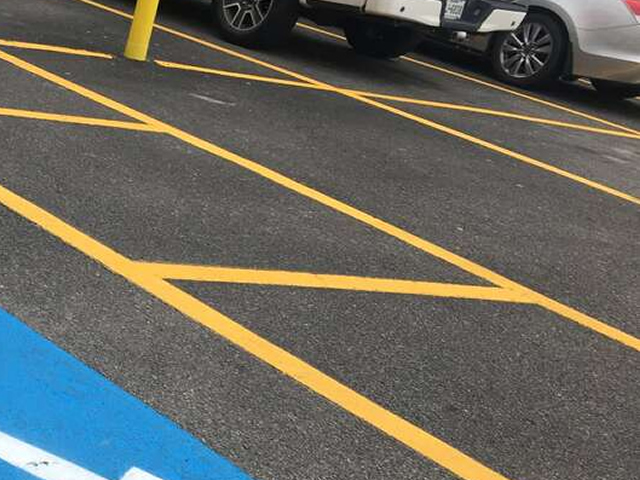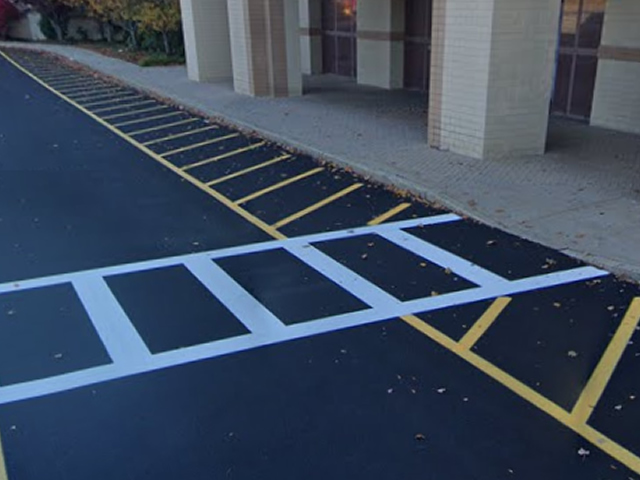What Do Yellow Stripes in a Parking Lot Mean?
Yellow stripes in a parking lot typically indicate spaces where parking is prohibited or restricted. They are commonly used to mark areas for no parking, loading zones, or to outline specific sections of the lot.
Understanding the Purpose of Yellow Striping
In most parking lots, yellow stripes are used to clearly mark areas where vehicles are not allowed to park. These stripes are often placed in areas that need to remain clear for safety or operational reasons. For example, yellow striping is frequently used near building entrances, loading docks, or around fire hydrants to ensure that emergency access is unobstructed.
The bright yellow color is chosen because it is easily visible, both during the day and at night. This high visibility helps to prevent accidents and ensures that parking rules are followed. In some cases, yellow stripes can also be used to mark pedestrian walkways or to separate traffic flow from parking spaces.


Yellow Striping for No Parking Zones
One of the primary uses of yellow stripes in a parking lot is to designate no parking zones. These areas are critical for maintaining safe and efficient traffic flow within the lot. Common places where you’ll see yellow striping include:
- Fire lanes: Areas that must remain clear for emergency vehicles.
- Loading and unloading zones: Spaces where delivery trucks or service vehicles may temporarily stop, but not park for extended periods.
- Handicap-accessible areas: Yellow striping is sometimes used in conjunction with blue markings to indicate extra clearance needed around handicap-accessible parking spaces.
These no-parking zones are essential for ensuring that vehicles can move in and out of the lot smoothly and that there is always access for emergency personnel if needed.
Loading Zone Designation with Yellow Striping
Another common use for yellow stripes is to mark loading zones. These areas are usually reserved for delivery trucks, service vehicles, or customers picking up large items. The yellow striping serves as a visual cue to drivers that these spaces are not for regular parking.
Loading zones are generally located near the entrances of businesses or warehouses to facilitate easy loading and unloading of goods. While vehicles may stop temporarily in these areas, long-term parking is typically prohibited. Business owners should ensure that these zones are clearly marked to avoid confusion and to keep operations running smoothly.
Safety Areas and Yellow Striping
Yellow striping can also be used to enhance safety by outlining areas where pedestrian traffic is expected or where additional clearance is needed. For example, yellow stripes might mark pedestrian walkways, creating a designated path that keeps pedestrians safe from vehicles. Similarly, you might find yellow striping around crosswalks or along the edges of parking lots to help guide both drivers and pedestrians.
In some cases, yellow stripes can be used to indicate areas where there is a sudden change in elevation or a potential hazard. This type of striping helps to alert drivers and pedestrians to watch their step or slow down when navigating the area.
Yellow Crosshatching for Traffic Control
In addition to striping specific spaces, yellow crosshatching is often used for traffic control. These patterns of diagonal yellow lines indicate areas where vehicles should not stop or park. Crosshatching is common at intersections within large parking lots, near traffic islands, or in front of exits and entrances where vehicles need to stay clear to avoid blocking traffic flow.
These crosshatched areas are critical for preventing congestion, especially during busy times when a lot is heavily trafficked. Business owners should ensure that these areas are properly marked to prevent confusion and to promote efficient traffic movement.
Parking Lot Maintenance and Repainting of Yellow Stripes
Regular maintenance of parking lot striping is essential for ensuring that yellow stripes remain visible and effective. Over time, weather conditions, vehicle traffic, and other factors can cause striping to fade. This can lead to confusion among drivers and may result in safety risks if important areas like fire lanes or loading zones are not clearly marked.
It’s recommended that parking lots be re-striped every one to two years, depending on the amount of wear and tear. By keeping yellow stripes fresh and bright, business owners can maintain a safe and efficient parking lot that meets local safety codes.
The Importance of Yellow Stripes in Parking Lots
Yellow stripes in a parking lot play a crucial role in maintaining safety, ensuring proper traffic flow, and designating specific areas for no parking or loading zones. Business owners should understand the purpose of yellow striping and ensure that it is applied correctly and maintained over time. By keeping these areas clear and visible, parking lots can operate efficiently and safely, providing a better experience for both customers and employees.

